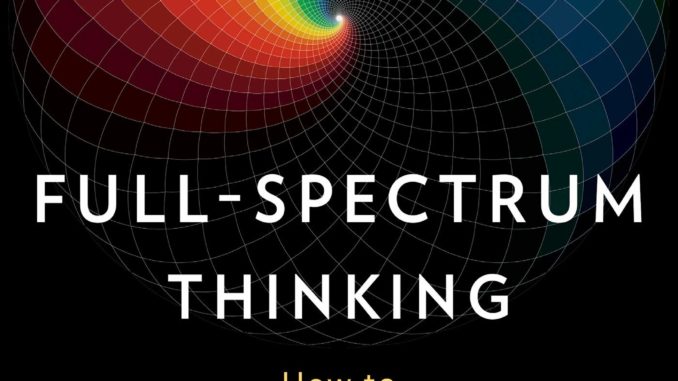
Bob Johansen has the courage of his convictions. The tone of his writing throughout the entirety of Full Spectrum Thinking: How to Escape Boxes in a Post-Categorical World strikes me as someone who has seen the proverbial light, even if through experience rather than in some divine flash. He has ten books in the rear view mirror and, without question, the hard work of passing years has given his worldview and personal vision a distinctive sharpness. His message about the inexorable march of mankind into an increasingly digital future is only a part of what Full Spectrum Thinking explores. Despite his zeal, Johansen buttresses his theorizing into an impressive gamut of research.
ABOUT THE AUTHOR: www.iftf.org/fullspectrumthinkingbook
The one-time President and now Distinguished Fellow at the Institute for the Future comes straight at his readers from the outset. The first of the book’s three parts bears the title “The Past Cannot Continue” so you know, right away, Johansen’s message will never be beholden to what has come before. He introduces his concept of “full spectrum thinking” in the first part of the book before diving deeper into the subject. Johansen throws an assortment of individualized terminology at the reader during the course of Full Spectrum so the importance of setting that tone with the reader has a twofold importance. It serves to ground the reader in his concept before expanding things further and, perhaps most importantly, introduces those same readers to Johansen’s distinctive voice as a writer.
GOODREADS: www.goodreads.com/book/show/49918684-full-spectrum-thinking
He often writes in short, declarative sentences that pack a punch. Full Spectrum Thinking, likewise, indulges in a certain amount of repetition, but it never mars the text. It works well with the book’s short length – there are no long-winded flights of self-indulgent fancy, no pointless digressions. Johansen’s focus remains tight on the subject at hand from the first page to last and none of the stories about his personal experiences are ornamental instead of functional. The research he put into strengthening the work pays off as well. Full Spectrum Thinking has full command of its facts and underline his ideas without fail.
The book is current enough it even contends with what a post pandemic world will look like for full spectrum thinkers. Johansen makes a convincing case there isn’t a single aspect of modern life where full spectrum thinking will fail to serve the individual well and benefit society as a whole. Johansen puts a number of tables and figures in the book as well to help frame data and information he discusses in the text. It’s an excellent touch for many reasons, but its limited use is one. This near perfect balance of elements helps make Full Spectrum Thinking: How to Escape Boxes in a Post-Categorical World one of the best non-fiction texts published in recent memory, any subject. Bob Johansen has documented with this book a vision of a world to come. It is about how we can cultivate the necessary tools to meet its challenges head on rather than finding ourselves reeling in their wake.
Clay Burton
